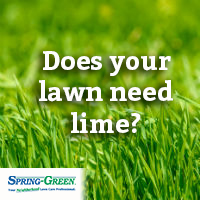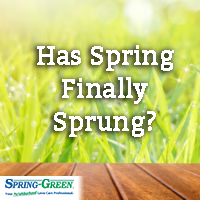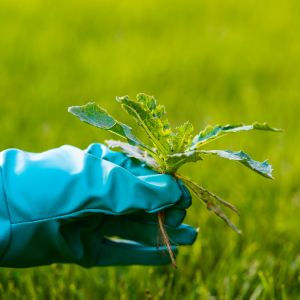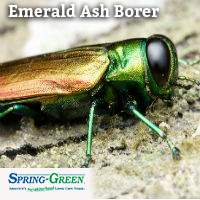Have a question? Ask the expert!

Lime On Lawn: Does Your Grass Need Lime Treatment?
You may have heard one of your parents or grandparents or the gardener down the street who has the best looking flowers and lawn say, “You got to add lime to sweeten the soil!” In many cases that is true, but not for every lawn or landscape. It's important to determine the pH of the soil before adding any amendments to the lawn. pH levels that are below a scale of 6.5 are considered acidic while pH levels that are above a scale of 7.0 are considered alkaline. Neutral pH is from a scale of 6.5 to 7.0. When soils are tested, and show that they are in the acidic range, adding lime is the appropriate soil

Do It Yourself Lawn Care Worth It? Factors To Keep in Mind For the DIY Landscaper
It's safe to state that spring has finally arrived through much of the United States. The temperatures are on the rise, lawns are waking up from dormancy, trees and shrubs are leafing out and many of these plants are also producing flowers and the tulips, daffodils and other spring bulbs are blooming. It is also the time of year when advertisements for lawn care fertilizers and other control products are seen in the mail, newspapers and online. If you use a professional lawn care service like Spring-Green to care for your lawn, you may start comparing the price you pay for that service to the prices

Has Spring Finally Sprung? Tips For Your Lawn This Spring Season!
Spring has taken its sweet time to arrive for most of the U.S. If you live in the more northern states like Minnesota, Wisconsin or Michigan, you may be thinking that spring may never arrive since these areas still have snow. Receiving some snow at this time of year is not uncommon for these folks. Even the lawns in the warmer parts of the U.S. are greening up at a much slower rate than normal. Warm season turfgrasses such as Bermuda or Zoysia, often turn brown during the winter months and don’t begin to start growing until temperatures are consistently above 70 degrees. There have been wa

What Makes A Plant A Weed? Characteristics of Weeds and What They Are
Around the world, there are approximately 250,000 species of plants, with an estimated 8,000 of these classified as weeds. According to the Weed Science Society of America (WSSA) , about 312 common weed species can be found in the U.S. Exploring weed identification information can be fascinating, as some plants commonly labeled as weeds—such as birch, spruce, and yews—are also valued as desirable plants in other contexts. What Defines a Weed? A weed is simply a plant growing where it is not wanted. This can include plants that were not i

Winter Turf Damage: Cold Temperatures Affected Southern Lawns
Blog Post Provided From Roland Freund, Spring-Green Franchise Owner of Spring, Texas This past winter will be remembered as an unusually cold one in the South region, and landscapes are now telling the story. Homeowners are busy trying to replace dead plants and repair lawn areas. Since Eastern Redbuds are blooming, there is a very good chance the freezing cold weather is behind us. Lawn Care companies and the Extension Offices have been inundated with phone calls regarding dead areas in lawns. Everyone is quick to blame someone, but the truth of the matter is that no one had c

Harold Enger's Lawn Care Journey That Began 40 Years Ago
On February 20, 1978, I started what has become a journey that has lasted 40 years. It was on that date that I walked into the office of a lawn care company in Wheeling, IL, but I was only there for training. I was going to work in an office that was about 15 minutes from where I worked. Wheeling was about 45 minutes from where I lived, but in 1978, gasoline was $.63 a gallon and I drove a Volkswagen Super Beetle, so it was not that expensive to drive the 20 some miles. I guess it is all relative, but here are some other 1978 facts to ponder: Average Cost of new house $54,800.00 Average Inc

Life Cycle of Winter Annual Weeds In Your Lawn and Landscape
In the world of weeds, there are three different life cycles – annual, biennial and perennial. Annuals only live for one growing period, biennials live for two years and perennials live for more than two years. Among these life cycles, there is also a distinct as to when the initial germination takes place. The common thought is that all weeds germinate in the spring, but many of them germinate in the fall, such as Dandelions, Henbit and Shepard’s Purse. These life cycles are referred to as winter germinating weeds. Winter Annual Weeds In Your Landscape Winter annual weeds are often

How Cooler Temperatures Are Affecting Lawn and Landscape
Is It Spring Yet? As is the case with most years, sometimes it will warm up early, fooling a lot of plants, including turfgrasses, to start the annual spring green-up. Only to be broadsided with an arctic blast and cooler temperatures that pushes plants back into winter dormancy. Cool-season turfgrasses like bluegrass, ryegrass and the fescues are somewhat accustomed to these weather fluctuations, but the warm-season grasses, such as Centipede, St. Augustine and Bermuda grasses can be greatly affected by a cold snap after they have been coaxed into an early spring green-up by an early warm up. Such is the case with many lawns in the warmer parts of the United States. Roland Freund, Franchise Owner in the Houston, Texas area, posted some information on his

How to Get Your Lawn and Landscape Ready For Spring
If you live in the southern part of the U.S., you may have already started getting your lawn and landscape in shape for the coming spring. For those that live in the more northern parts of the U.S., you are most likely wishing that it will start to get warmer so that the snow will melt and you can see your lawn, but there are still things that you can do to start getting your landscape in shape for the coming year. I conduct regional training programs across the U.S. at this time of year to help set the pace for the coming year. Besides sales and customer service topics, I also include

Destructive Tree Insect Beetle: The Emerald Ash Borer
There is a division of the United States Department of Agriculture entitled APHIS, which stands for The Animal and Plant Health Inspection Service. This agency oversees protecting animal health, animal welfare, and plant health. APHIS collaborates with other agencies to protect U.S. agriculture from invasive pests and diseases. One if these invasive pests is the Emerald Ash Borer. Much has been written about this incredibly destructive insect that has decimated the ash tree population for much of the Midw
